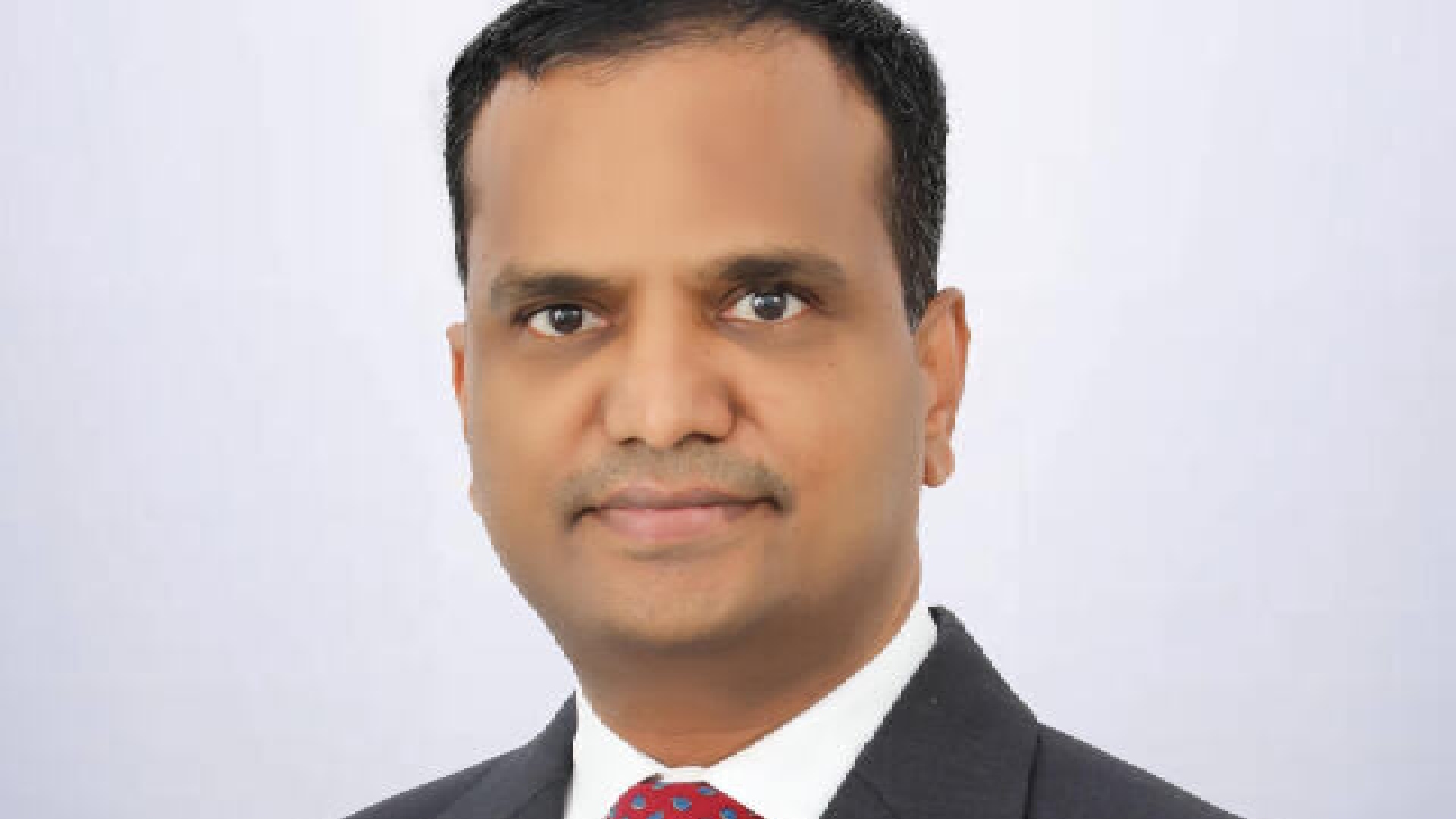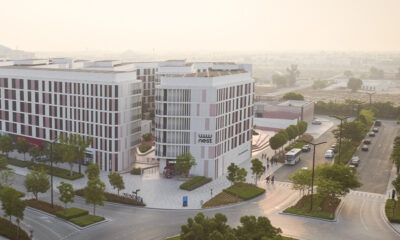Financial
Middle East’s Strategic Priorities: Economic Diversification, Visionary Reforms, and Stability

By Dr. Sunita Mathur, Assistant Professor at Heriot-Watt University Dubai

The Middle East has experienced a remarkable transformation in recent years, establishing itself as a global centre for diverse industries and sectors. Once primarily recognized for its rich cultural heritage, expansive deserts, and complex geopolitics, the region is now emerging as a dynamic and influential force on the international stage. Strategic investments, economic diversification, and a strong emphasis on innovation have fueled this evolution. This article delves into the factors driving this shift, highlighting the Middle East’s growing prominence in business, technology, culture, and diplomacy.
The Middle East’s rise as a global hub is driven by its dedication to economic diversification, significant advancements in technology and innovation, and a revival in cultural heritage, which together draw worldwide attention. Additionally, the region has made notable contributions to global diplomacy, exemplified by the historic Abraham Accords of 2020, which brought the UAE, Israel, and Bahrain together in agreement. Substantial investments in education and talent development have led to the development of human capital and the establishment of world-class universities, attracting students and researchers globally. This focus on knowledge sharing and innovation has further strengthened the Middle East’s position in the global arena.
Growth as a Financial Hub
The discovery of oil in Saudi Arabia in 1938 led to an oil boom across the Gulf Cooperation Council (GCC) member states, including the UAE, Bahrain, Oman, Qatar, and Kuwait, driving significant economic growth. However, GCC leaders are shifting toward alternative sectors like finance to lessen their dependence on oil for environmental and economic reasons. This industry is ideal for diversification due to the substantial resources generated from oil revenues, which can be invested in financial sectors like asset management investment services, and other financial sectors. Also, the region’s strategic location at the crossroads of Europe, Africa, and Asia makes it a trade hub for oil and other commodities, including tourism and agriculture. This strategic shift underscores the region’s vision for a sustainable and diversified economic future. The GCC nations boast a debt-to-GDP ratio of approximately 20 per cent per cent, significantly lower than countries like the United Kingdom and the USA, where it exceeds 100 per cent, and Japan, where it surpasses 200 per cent. This comparatively low ratio gives GCC countries greater flexibility to leverage their GDP and secure additional investment capital.
When combined with their economic history, competitive advantages, and pro-business policies—such as low taxes and the availability of free zones—these factors enhance the GCC’s appeal as an emerging financial hub for the future of work. Recent legislative changes, like the UAE’s decision to allow non-nationals to establish onshore businesses without local partners, further solidify the region’s reputation as an attractive destination for international companies. The free zone laws in the UAE and Saudi Arabia, which designate specific areas as technically offshore, exempt companies established there from older legal frameworks. This approach enables governments to maintain critical laws while creating environments where international businesses feel more at ease setting up operations, further driving the region’s economic appeal.
Future Projections
The Middle East contributes only 4 per cent of global GDP, yet its rich cultural heritage, strategic geographic position, and vast natural resources make it a key hub for business, investment, and innovation. Historically reliant on oil revenues, the GCC nations—Saudi Arabia, the UAE, Qatar, Kuwait, Bahrain, and Oman—are now diversifying their economies through significant reforms. Ambitious initiatives such as Saudi Arabia’s Vision 2030 and the UAE’s Vision 2031 exemplify efforts to reduce dependence on hydrocarbons and build resilient, future-ready economies.
The UAE’s Vision 2031 aims to drive economic diversification and sustainable growth, targeting a GDP increase from AED 1.49 trillion to AED 3 trillion. The plan seeks to reduce oil dependence by raising the non-oil GDP to 64 per cent, generating AED 800 billion in non-oil exports, increasing tourism’s GDP contribution to AED 450 billion, and growing foreign trade value to AED 4 trillion, reinforcing the UAE’s role as a global economic hub. Furthermore, Saudi Arabia’s Vision 2030 focuses on diversifying the economy away from oil. It aims to boost non-oil revenue from SAR 163 billion to SAR 1 trillion and increase private sector contribution to GDP from 40 per cent to 65 per cent. The initiative includes mega projects like NEOM, a USD 500 billion city powered by renewable energy, and aims for small and medium enterprises (SMEs) to contribute 35 per cent to GDP while increasing women’s workforce participation from 22 per cent to 30 per cent.
The September 2024 edition of PwC’s Middle East Economy Watch highlights two key developments set to shape the future of the Middle East positively. First, a USD 35 billion investment from the UAE has driven a remarkable economic recovery in Egypt this year. Second, the GCC’s growing prominence in the global AI landscape is underscored by robust ICT infrastructure, strategic government initiatives, and substantial capital, making the region an attractive hub for top AI firms. Additionally, the GCC is well-positioned to capitalize on AI’s economic potential by enhancing efficiency and fostering innovation across various sectors. The region’s economies are forecasted to grow at an average annual rate of 3–4 per cent through 2026.
The Middle East’s transformation from a region marked by geopolitical tensions to a global centre for business, technology, culture, and diplomacy is remarkable and full of potential. Driven by visionary leadership, strategic investments, and a focus on diversity and innovation, the Middle East is poised to significantly shape the future worldwide. As the region continues to evolve and redefine its identity, it will increasingly influence global affairs, fostering unprecedented cooperation, innovation, and cultural exchange.
Financial
YUBI GROUP DEBUTS MORTGAGE IN THE UAE, TRANSFORMING HOW CONSUMERS SECURE MORTGAGES WITH UNPRECEDENTED SIMPLICITY

Yubi, the world’s only technology company powering the end-to-end debt lifecycle, has announced the launch of Yubi Mortgage in the UAE. This marks the company’s first B2C product in the region and introduces a new digital pathway for residents, citizens, and non-residents to explore and secure mortgages with confidence and clarity. The launch positions Yubi as a new force in the UAE’s mortgage ecosystem and sets a fresh benchmark for transparency, accessibility, and customer experience.
Yubi Mortgage has been established to address the long-standing challenges faced by homebuyers across the UAE property market. These include limited access to lenders, high process complexity, unclear pricing, repetitive documentation, and limited transparency into application status. These issues often lead to delays, uncertainty, and unnecessary stress for mortgage seekers. Yubi Mortgage eliminates these barriers by providing a single digital platform that connects users to all major lenders in the country.
Yubi MENA has already partnered with 25+ lenders across Retail, SME, and Corporate financing. These partnerships strengthen accessibility for financing across the entire continuum and support the UAE’s broader digital transformation goals.
Home financing seekers can submit a single digital application to access a broad range of retail, Islamic, commercial, private, and digital banks. The platform employs AI and machine learning to classify documents, verify information, assess eligibility, and assist lenders in making quicker decisions. A business rule engine matches borrowers with the most appropriate lenders, helping them avoid costly mistakes from approaching the wrong lender and having to restart the process. Their real-time application tracking keeps users informed at every stage.
For mortgage seekers, the experience becomes simpler, more transparent, and considerably more efficient. For lenders, the platform enhances operational discipline by reducing non-converting applications and optimizing utilization of existing processing capacity. Yubi Mortgage fosters a more balanced and productive mortgage ecosystem for both sides of the market.
Speaking at the launch, Mr. Sivakumar Rajakkannu, Chief Business Officer, Yubi MENA, said: “This is a defining moment for us as we bring Yubi Mortgage to the UAE. Home ownership is one of the most important decisions people make, and our goal is to make the journey as simple and transparent as possible. We want every mortgage seeker to have access to all prominent lenders and to feel fully supported from the first step to the final approval. Yubi Mortgage reflects our commitment to financial inclusion and showcases how technology, AI, and ML can help people make smarter and more confident decisions.”
Yubi’s entry into the mortgage segment builds on its established presence in the UAE, where it has been helping financial institutions and enterprises optimise journeys across the debt and customer lifecycle. Founded in 2020 by CEO Gaurav Kumar, Yubi powers more than $36 Billion in total debt volumes and supports over 17,000 enterprises and 6,200 lenders worldwide. Valued at USD 1.5 Billion, Yubi is backed by globally recognised investors including Peak XV, Lightspeed, Lightrock, TVS Capital, B Capital Group, Dragoneer Investment Group, and Insight Partners. Their support reflects strong confidence in Yubi’s mission to deepen debt markets and democratise access to capital.
Yubi was recently recognised as Fintech Startup of the Year at the Global Fintech Fest 2025. This recognition highlights Yubi’s innovation and leadership across the global financial landscape. The launch of Yubi Mortgage in the UAE further strengthens its mission to simplify, streamline, and modernize the lending ecosystem for both consumers and financial institutions.
Financial
FASTER, MORE ACCURATE FINANCIAL REGULATION: HOW CAN 2026 UNLOCK REGULATION THAT SUPPORTS A FUTURE-READY ECONOMY

Author: Alan Blanchard, Business Development Director for TSO, has been responsible for digital transformation both as a regulator and consultant. In his current role he helps organisations to publish regulations more effectively.
In a rapidly evolving global regulatory and innovation environment, the resilience and growth of economies depends on their ability to adapt and innovate. The United Arab Emirates is widely recognised for its forward-thinking regulatory authorities, which consistently encourage the adoption of new technologies and work collaboratively with industry leaders to build new regulatory rails for exponential technologies that have yet to embed into the traditional business systems. As a future-ready financial hub, investment in digitisation of rules can help harness innovation and create growth.
Transparency: the cornerstone of market confidence
In the financial sector, regulation and financial frameworks serve as the backbone of market integrity and investor confidence, but the challenge today is sheer scale. Firms must keep pace with a near constant stream of rule changes across major jurisdictions, and the cost of financial crime compliance alone is about 206 billion dollars a year globally. Transparency and clear communication of these rules inspire confidence in markets. When regulatory expectations are accessible and consistently applied, market participants can plan, invest, and innovate with certainty. This confidence is essential not only for established institutions but also for new entrants, because when compliance becomes too complex and slow, entry drops sharply, as seen in the US where regulators approved only about five new bank charters per year on average from 2010 to 2023.
The policy and supervisory role of financial regulators has become increasingly complex. Rapid technological advancements, fintech companies, cryptocurrencies and globalisation mean that regulators need to continually adapt to protect consumers and the integrity of financial systems. The landscape demands agility and collaboration to effectively manage challenges. A significant barrier to transparency and innovation in regulation is the persistence of legacy formats such as PDF rulebooks and siloed regulatory handbooks. These formats can be difficult to search, interpret, and apply, particularly for new market entrants or technology-driven firms.
Modernising regulatory frameworks involves more than simply updating existing rules; it requires a fundamental rethinking of how regulations are designed, communicated, and implemented.
Unlocking regulation and moving to rules as code
Unlocking regulation means transforming legacy documents into machine-readable formats that make regulation easier to find, use, and understand. This shift not only lowers the barriers for new players but also supports RegTech solutions; technologies designed to streamline compliance, automate reporting, and provide real-time regulatory insights.
Machine readable rules and rules as code can deliver improved interoperability between firms and regulators, simplify change management, and remove barriers to entry for market participants. The first step is to convert legacy unstructured documents, such as PDFs, into more useful and manageable machine-readable formats such as XML, identifying headings, parts, sections and numbering and adding structure to the content. This structured content makes it possible to present the rules in different ways to meet the needs of regulated organisations, for example contextualising rules with a timeline of changes on a website, or publishing via an API to enable organisations to consume the rules as data.
As well as making rules easier to understand, structured data enables faster and more accurate editing workflows. Content can be managed at paragraph level, enabling relationships to be made and references to be added. Editors can self-serve using a Content Management System to edit content at a paragraph level and view the revised content immediately for proofing.
What this means for the future
Digitising and structuring regulatory information creates several tangible benefits. Firms can quickly and accurately understand their compliance responsibilities through improved search and better presentation of the rules that apply to them. Enhanced interoperability enables data sharing across different systems and institutions without manual reformatting. Machine-readable rules and rules as code create the possibility of automated compliance checks, better integration with RegTech solutions, and even the ability to simulate the impact of regulatory changes before implementation. An additional benefit of structured data is that it makes it easier for AI to use accurately, enabling large amounts of information to be summarised, connected and queried using day to day language.
The transition to digital, machine-readable regulations not only enhances transparency and efficiency but also fosters an environment conducive to innovation and growth. By leveraging structured content, regulation as code, and collaborative policymaking, regulators can create more agile, responsive, and user-friendly frameworks that better reflect the realities of financial markets today and in the future.
Financial
Finastra’s Saudi Arabia Reimagine Banking Forum Spotlights Innovation, Trust, and AI in a Vision 2030 Financial Landscape

Finastra, a global leader in financial services software, brought together regulators, banks, fintechs, and technology leaders at the Saudi Arabia Reimagine Banking Forum in Riyadh to examine how the Kingdom’s financial sector can accelerate innovation while protecting trust, resilience, and customer value under Vision 2030.
The forum featured perspectives from regional and global experts, including Rudy Kawmi, Vice President for Middle East, Africa and Asia Pacific, Universal Banking at Finastra, along with senior leaders such as Abdulkarim Alsowaygh, Head of Advisory Services at TechArch, and Aymen Belhedi, Digital and Technology Transformation Leader at KPMG Middle East.
As the conversation turned to how banks can turn ideas into action, Finastra shared perspectives based on its long-standing work with financial institutions in the Kingdom, where it has supported banks since the early nineties through local expertise, established relationships and ongoing investment. The company referenced the role of modern core platforms like Essence, in supporting agility, compliance and customer-centric design. Finastra Essence was also recognized as a Leader for the 2nd consecutive time in the Gartner Magic Quadrant for Retail Core Banking Systems, Europe.
Across three panel discussions – Banking Today: Delivering delight in a hyper competitive world, Banking Tomorrow: Innovation, agility and relevance, and Practical AI: Leveraging AI for profit, safely and securely – speakers shared practical strategies to balance regulatory expectations, customer needs, and technology adoption.
Key insights from the Saudi Arabia Reimagine Banking Forum include:
Innovation anchored in trust and compliance
Panelists agreed that innovation in Saudi banking must begin with trust. Cybersecurity, regulatory alignment and security maturity were described as non-negotiables, not afterthoughts. Speakers highlighted the role of the Saudi Central Bank (SAMA) in setting clear guardrails through initiatives such as API-driven banking frameworks and the Regulatory Sandbox, enabling banks and fintechs to experiment in controlled environments while protecting consumers and financial stability.
From product proliferation to precision, lifestyle-integrated banking
The discussion underlined a shift from launching more products to delivering precise, contextual experiences. Banks in Saudi Arabia are under pressure to evolve from traditional service providers into lifestyle platforms that integrate payments, credit and everyday services into the digital journeys customers already use. With the risk of banking drifting into a utility model, where providers are interchangeable, panelists called on institutions to differentiate through relevance, immediacy and purposeful design, not just scale.
Ecosystem orchestration as the new competitive edge
Speakers stressed that no institution can innovate in isolation. Banks that act as ecosystem orchestrators, curating fintech, technology and cybersecurity partners while owning the “trust layer”, are better positioned to deliver new propositions quickly. Internal teams, advisors and partners form a single value chain. The conversation moved beyond capability lists toward how those capabilities are combined, governed and brought to market at speed.
Data and AI turning trusted information into intelligence
Data was described as a critical and often underused asset. Panelists highlighted that the real opportunity lies not in collecting more data but in converting trusted data into actionable intelligence. In this context, AI and generative AI can help banks move from reactive service models to proactive, personalized engagement, provided governance keeps pace. With the right tools and controls, small teams can now deliver improvements in productivity and customer experience that previously required much larger workforces.
Practical, ethical AI with humans firmly in the loop
The AI discussion focused heavily on ethics, explainability and human oversight. Panelists warned against black-box systems in areas such as credit decisions and collections, where AI outcomes directly affect people’s lives. They emphasized the need to identify and address bias in training data and to keep humans accountable for final decisions. AI was positioned as a powerful tool to automate repetitive tasks, assist agents and accelerate analysis, while freeing people to concentrate on higher value work.
Technology is available, but adoption remains gradual
Speakers noted that while the technology to support next-generation services is already in place, adoption timelines can vary. Some innovations introduced in pilot phases have taken time to progress to full rollout, reflecting the sector’s careful approach to implementation. The discussion highlighted opportunities for continued progress in areas such as real time, transparent cross-border payments and fully digital account opening that reduces the need for in-branch processes.
Across all sessions, there was a consistent message: Saudi Arabia is setting a high bar for responsible innovation by combining a progressive regulator, a clear national agenda and banks that are re-architecting for trust, speed and inclusion. The future of banking in the Kingdom will belong to institutions that innovate boldly, design for resilience, and earn customer trust every day.
-

 Tech News1 year ago
Tech News1 year agoDenodo Bolsters Executive Team by Hiring Christophe Culine as its Chief Revenue Officer
-

 VAR8 months ago
VAR8 months agoMicrosoft Launches New Surface Copilot+ PCs for Business
-

 Tech Interviews2 years ago
Tech Interviews2 years agoNavigating the Cybersecurity Landscape in Hybrid Work Environments
-

 Tech News5 months ago
Tech News5 months agoNothing Launches flagship Nothing Phone (3) and Headphone (1) in theme with the Iconic Museum of the Future in Dubai
-

 Tech News2 years ago
Tech News2 years agoBrighton College Abu Dhabi and Brighton College Al Ain Donate 954 IT Devices in Support of ‘Donate Your Own Device’ Campaign
-

 VAR1 year ago
VAR1 year agoSamsung Galaxy Z Fold6 vs Google Pixel 9 Pro Fold: Clash Of The Folding Phenoms
-

 Editorial1 year ago
Editorial1 year agoCelebrating UAE National Day: A Legacy of Leadership and Technological Innovation
-

 Cover Story10 months ago
Cover Story10 months agoUnifonic Leading the Future of AI-Driven Customer Engagement























